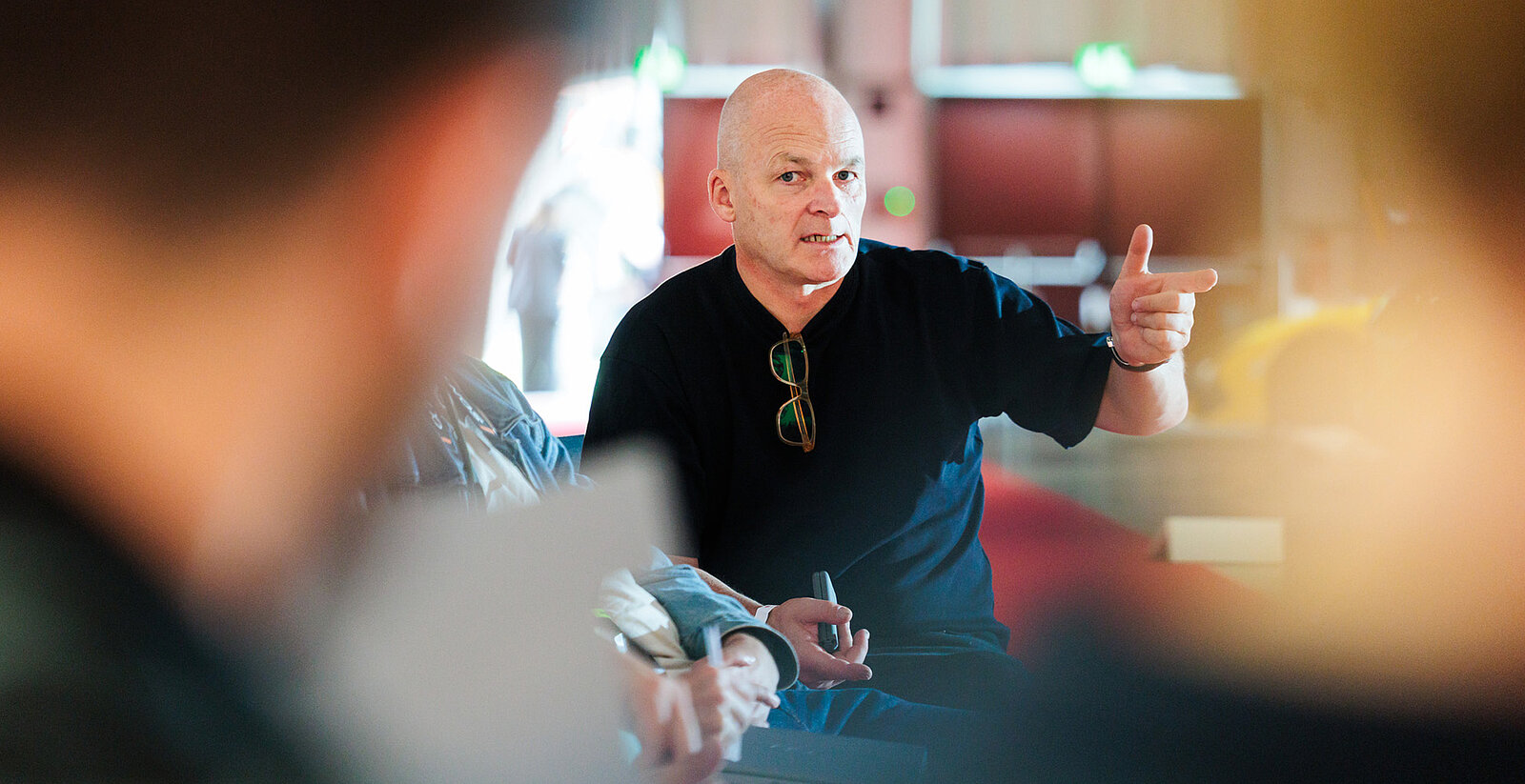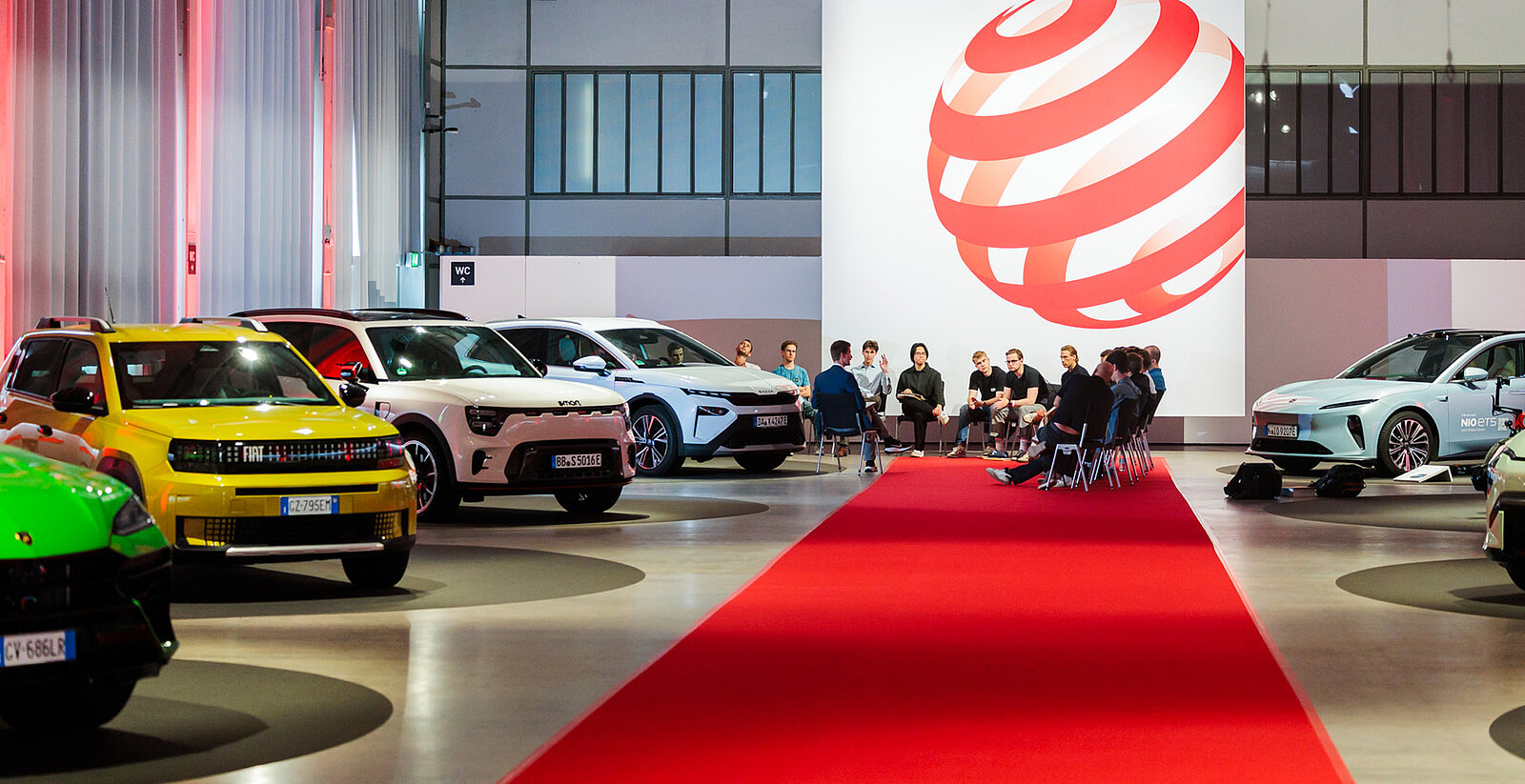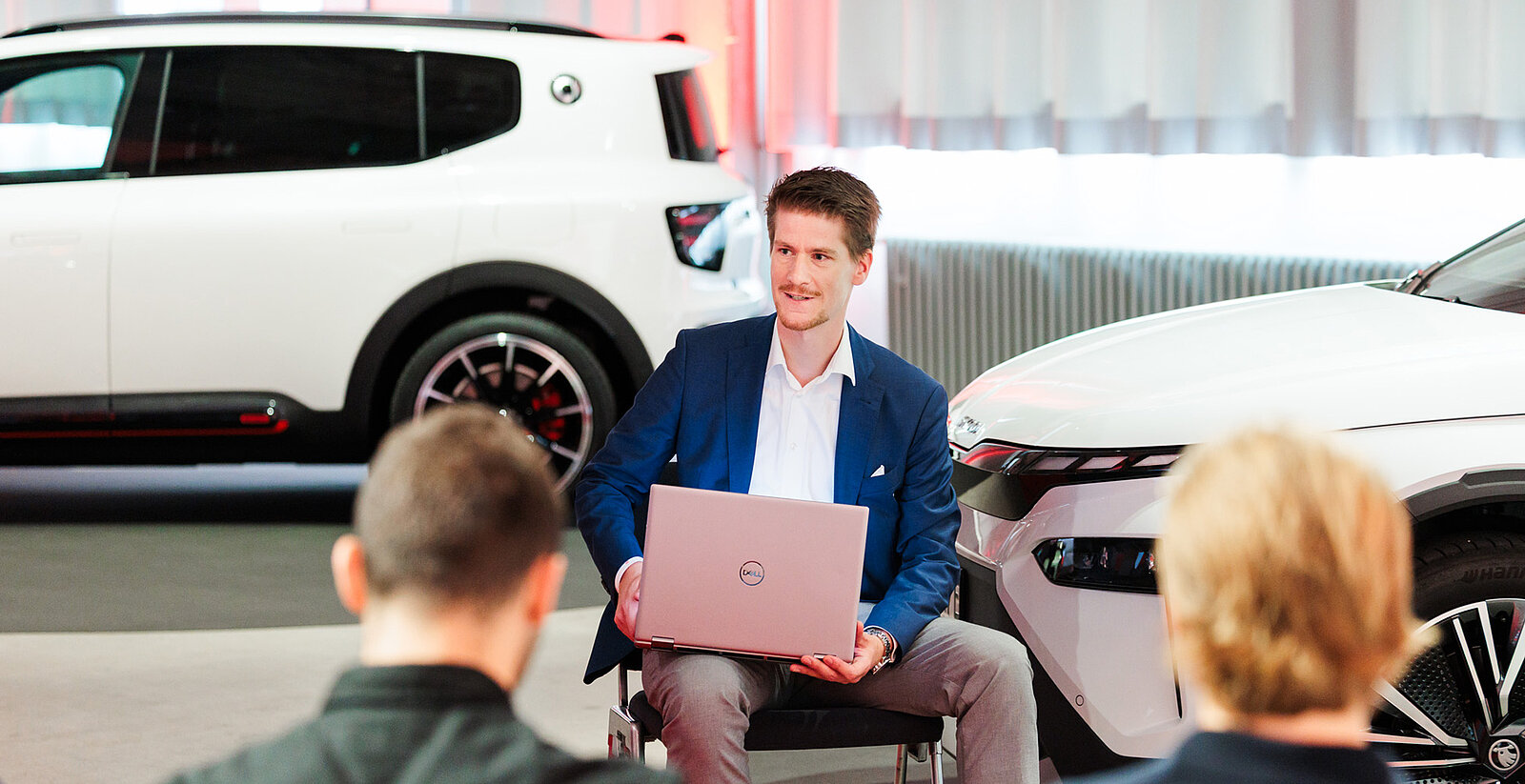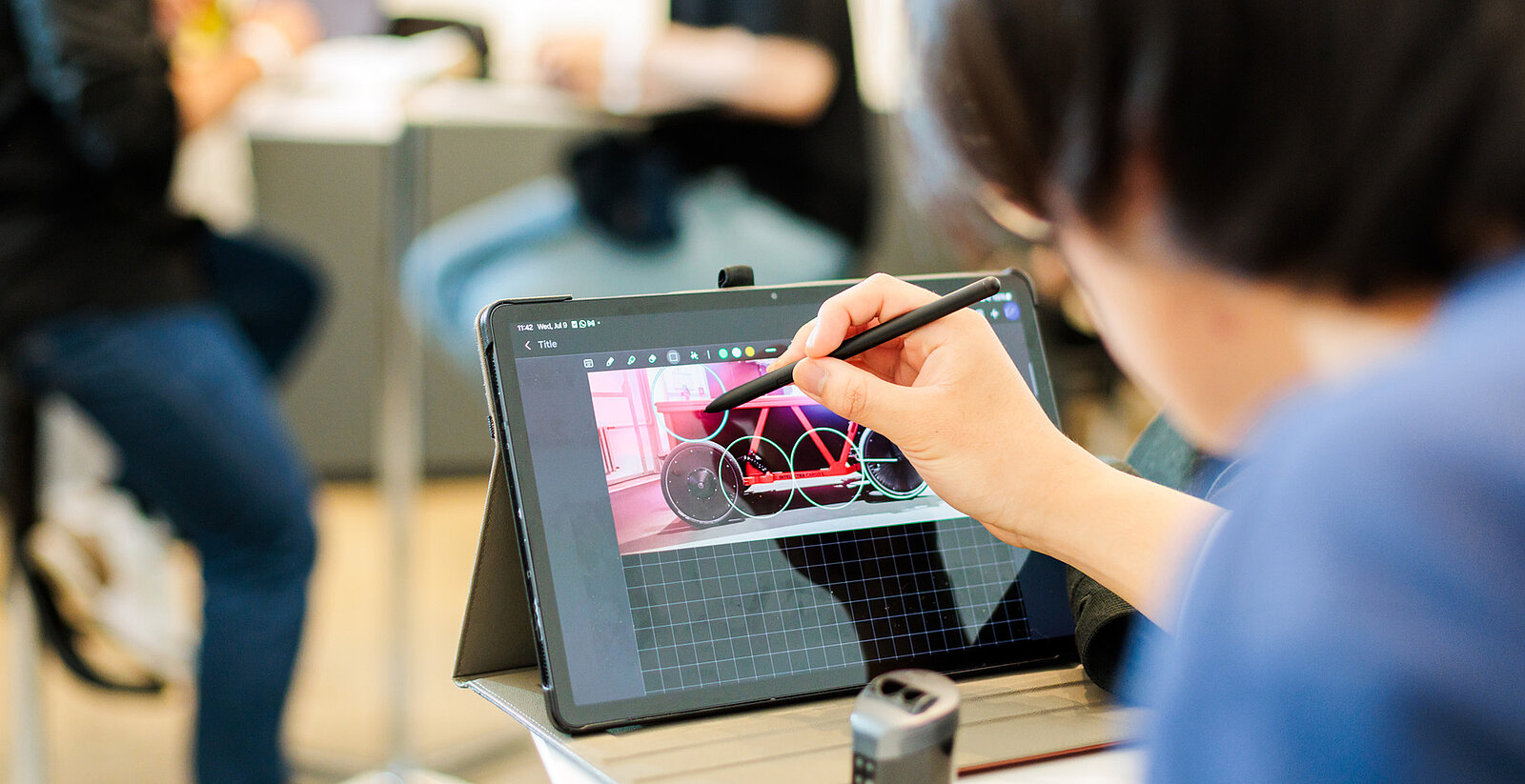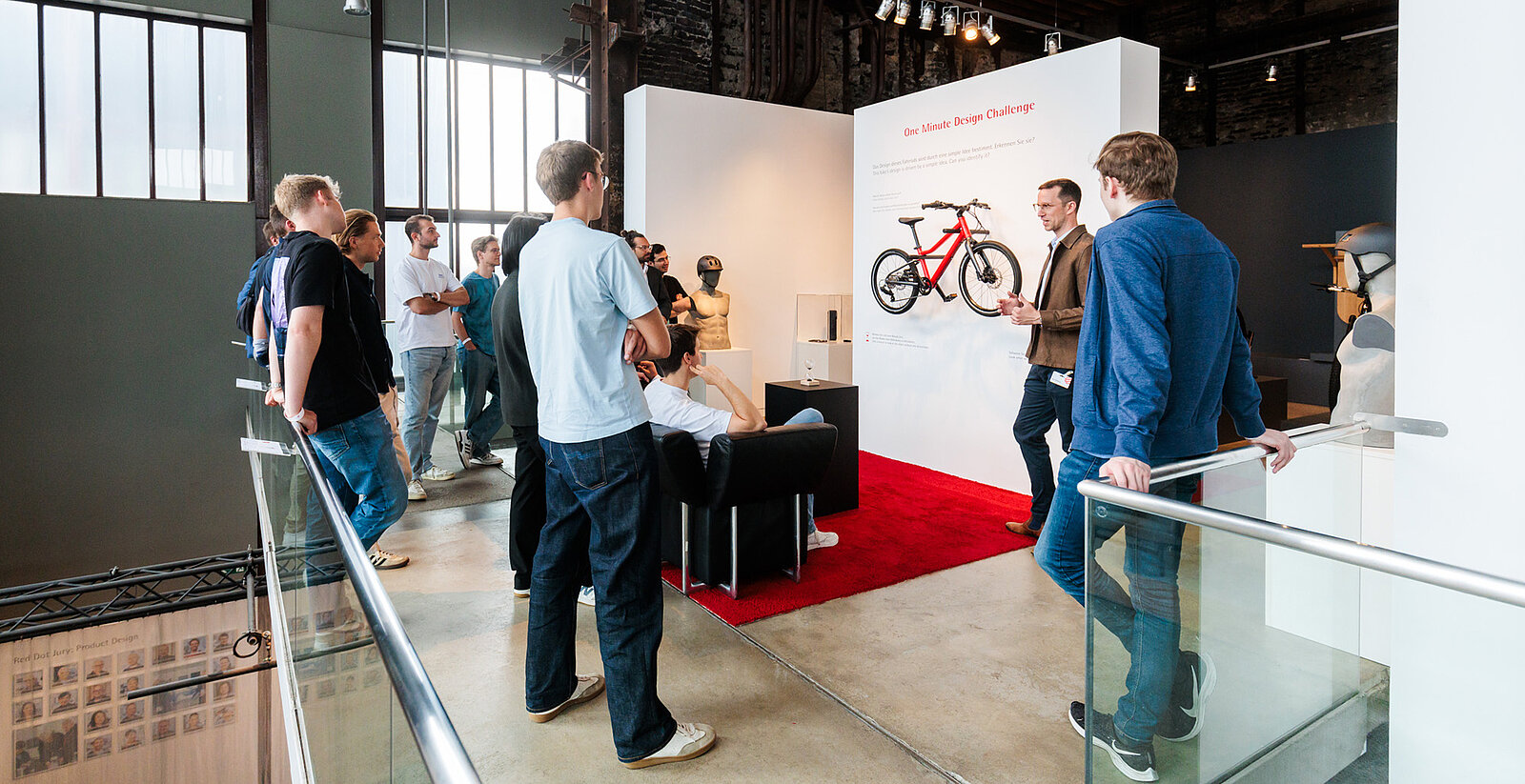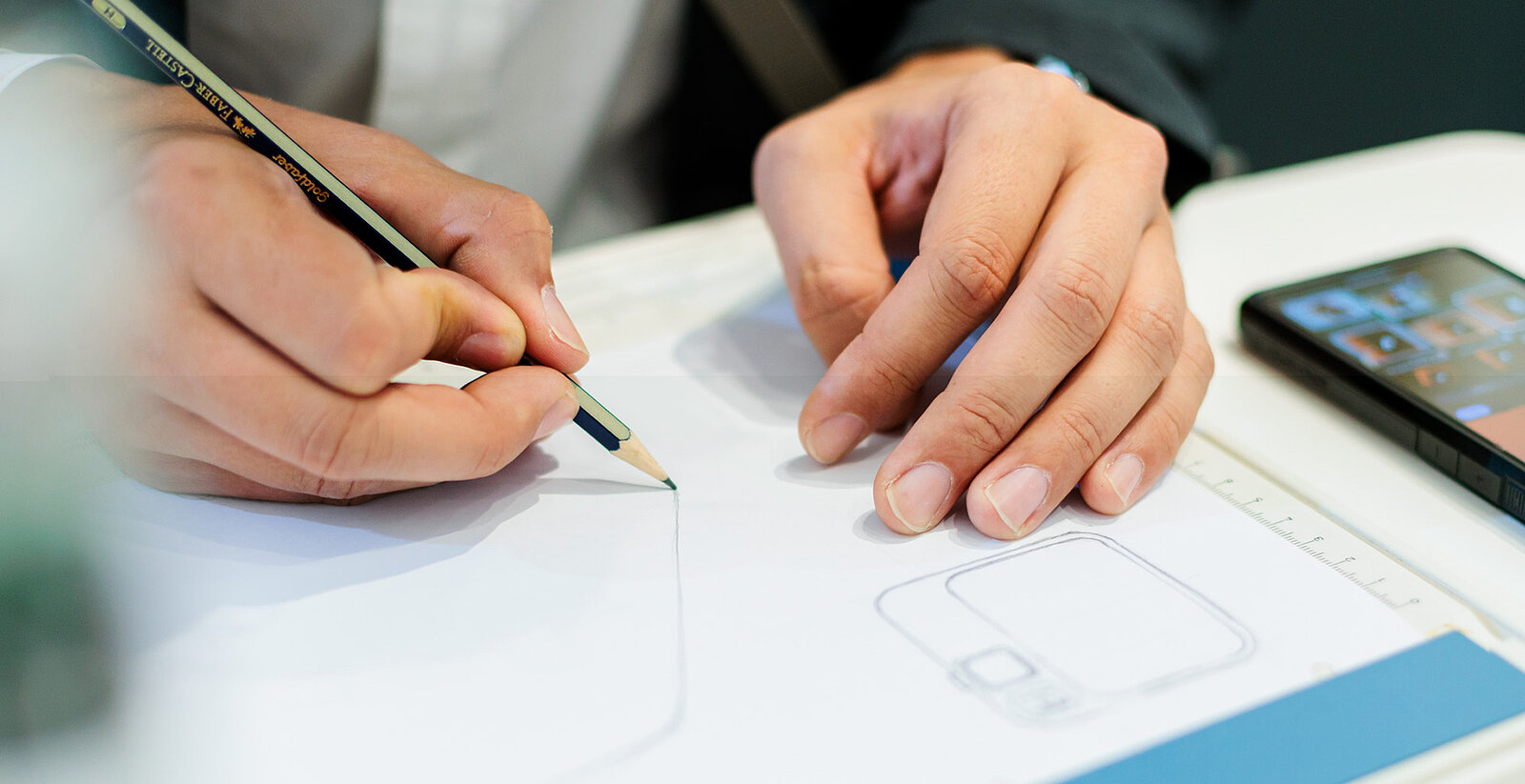When aspiring automotive engineers learn about the work of vehicle designers, the final exam at the end of the semester can take on creative forms, according to Professor Lutz Fügener in his role as guest lecturer at the Institute for Automotive Engineering (ika) at RWTH Aachen University. Together with Red Dot, he has developed an exam concept for his course that meets the requirements of the examination regulations. This form of examination has now been used to conclude the semester for three years.
Learning objective: Speaking the language of designers
Lutz Fügener is an expert in mobility design and a long-standing member of the Red Dot Award jury. In 2021, after more than 20 years as Professor of Transportation Design at Pforzheim University, he moved to Hof University, where he is responsible for the ‘Design & Mobility’ degree programme. In addition, he has been teaching students every summer semester for many years at the renowned Institute for Motor Vehicles (ika) at RWTH Aachen University in the course ‘Vehicle Design – Fundamentals and Industrial Practice’ with the aim of familiarising future automotive engineers with the work of vehicle designers, so that they ‘speak the same language’ and are later able to work constructively and efficiently in interdisciplinary teams with designers. The course usually concludes with a written final exam, which has been held in a completely new format at the Red Dot Design Museum since 2022.
The exam – observing, sketching, researching, analysing and communicating
On the day of the exam, Professor Fügener travels with his students from Aachen to Essen. At the Red Dot Design Museum, they first learn about the Red Dot Design Award and the criteria used by the competition jury to evaluate good design – the four qualities of good design. This is followed by the actual exam, which is divided into several steps: 1. Each student selects an exhibit. 2. They then have to make a sketch of this object that captures its distinctive features and proportions. 3. In an intensive examination of this product, its special features are researched and 4. summarised in the form of a presentation. In the next step, the sketches are collected and, during a joint tour of the museum, the other students must identify the object corresponding to each sketch, whereupon the creator gives a prepared, approximately 5-minute oral presentation on the design product on the spot. Even the teacher learns a lot from this format: ‘Without exception, the students give exciting and informative short presentations on the design objects they have chosen, and this also reveals to me the sophistication of some rather inconspicuous examples – which also illustrates and underlines the professional depth of the decisions made by my fellow jury members,’ says Fügener.
Theory meets practice ‘in the eye of the design storm’
As new and challenging as the exam situation is for everyone involved, the success is resounding: not only did all the students deliver high-quality presentations, they also had a lot of fun doing so. ‘The events couldn't have gone better in terms of organisation and content,’ sums up Fügener. ‘The aim of the programme was to shift the perspective on design from the position of the consumer to that of the creator, the professional. This seems to have been achieved, which makes me very happy.’ And one of the examinees said on record that he felt like he had been in the museum in the ‘eye of the storm of the design world.’
